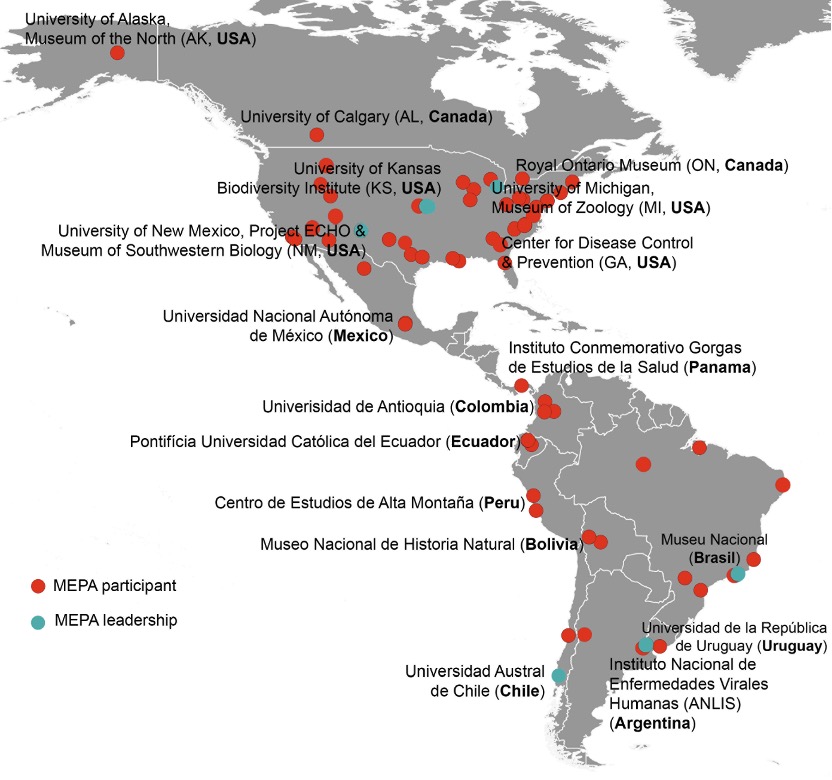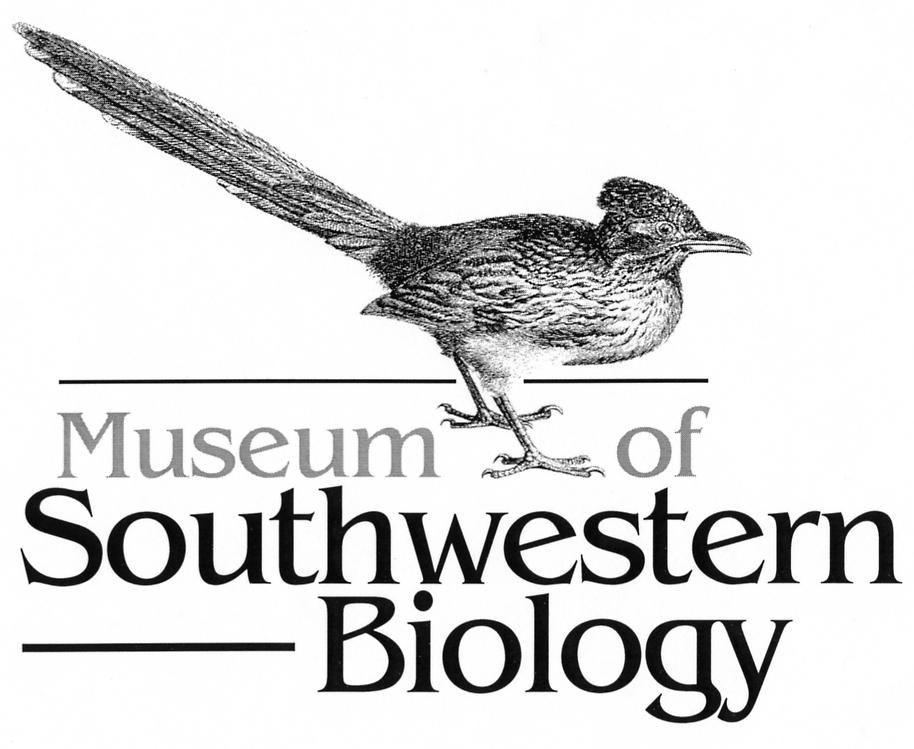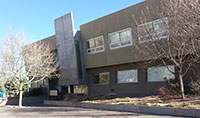PICANTE!
Education & Outreach
Classes
Seminar Integrated Approaches to Pathogen Prediction
WHERE: University of New Mexico
WHEN: Spring 2023
SYLLABUS:
| Week |
Date |
Topic |
Presenter(s) |
| 1 |
23 Jan |
PICANTE approach |
Cook, Dunnum, Goldberg |
| 2 |
30 Jan |
In the Stockholm Paradigm and the affiliated DAMA |
Hoberg |
| 3 |
6 Feb |
Hantavirus: Pilot system for pathogen prediction |
Bradfute |
| 4 |
13 Feb |
To survey diverse and unknown pathogens |
Edwards, Natvig |
| 5 |
20 Feb |
Pathogen discovery: The informatics challenge of deep dives |
Domman |
| 6 |
27 Feb |
Field trip - Non-model biorepositories |
Cook |
| 7 |
6 Mar |
An introduction to public biodiversity database: Arctos |
Dunnum |
| 8 |
13 Mar |
Spring break, no class |
|
| 9 |
20 Mar |
Prediction |
Colella |
| 10 |
27 Mar |
Math-epi models |
Wearing |
| 11 |
3 Apr |
Infection process |
Moses |
| 12 |
10 Apr |
Architecture and demographic dynamics |
Romero-Severson |
| 13 |
17 Apr |
Pathogen occurrence on the landscape Math-epi |
Yang |
| 14 |
24 Apr |
Surveillance & capacity building |
Lin |
| 15 |
1 May |
MEPA, public engagement, and Wrap-up |
Cook, Colella, Struminger |

MEPA is a network of >150 researchers, public health officials, veterinarians, wildlife biologists, students, pathobiologists, and museum professionals from >40 organizations in 15 countries in the Western Hemisphere. MEPA aims to integrate and reinforce diverse approaches to pandemic prediction and prevention through strategic development of biorepository capacities in the Americas and their integration into public health initiatives, emphasizing biodiverse countries in the Global South. With modest investment and modifications in infrastructure, geographically dispersed museum ‘nodes’ could be expanded, connected, and leveraged to form a powerful international network that accelerates emerging infectious disease research, prediction, monitoring, and mitigation. Through this Community of Practice, we hold biweekly zoom meetings (presentations and discussions) focused on emerging zoonotic pathogens.
Biorepositories, which now include extensive cryogenic tissue archives and associated informatics, can be efficiently probed for diverse pathogens to collectively connect data from diverse investigations towards a global synthetic view of One Health. As the primary biodiversity infrastructure of the planet, museum biorepositories provide extensive sampling and associated integrated data derived from these specimens for documenting and measuring change through time across species diversity and geography, making them an integral part of pandemic preparedness. By supporting biorepository development in biodiverse countries, MEPA aims to foster health equity to benefit local communities and ultimately global health. Realizing the MEPA Vision: We envision the MEPA network playing a critical role in strengthening global pandemic preparedness and response efforts. By optimizing and strengthening local resources and capabilities in biodiverse countries, MEPA is contributing significantly to global health security. Here are some ways we aim to achieve this:
- Collaboration and partnerships: Building new partnerships between natural history collections, research institutions, public health organizations, and government agencies to facilitate the sharing of data, expertise, and resources, leading to faster identification and mitigation of emerging pathogens. (See Colella et al. 2021. PLoS Pathogens)
- Training and capacity building: Organizing MEPA training programs and workshops for museum staff, researchers, and public health professionals on best practices for integrating biorepositories into emerging pathogen research and response (e.g., teaching modules).
- Infrastructure development: Upgrading museum cryogenic facilities and digital resources, including storage, laboratories, equipment, and databases to ensure best practices for the preservation and accessibility of biological samples to facilitate analysis and identification of pathogens.
- Public education and outreach: Leveraging the role of natural history museums as trusted education sources to raise public awareness about the importance of pandemic preparedness and the role of biorepositories in addressing emerging health threats. This could involve organizing exhibitions, public lectures, and other educational events.
- Research funding: Securing support for research focused on the identification, tracking, and analysis of hosts and their associated pathogens in natural history collections, including the development of new tools and techniques for efficiently screening novel pathogens.
- Biosecurity and biosafety: Implementing improved biosecurity and biosafety protocols and training in museums to prevent misuse of potentially harmful pathogens.
- Interdisciplinary research: Facilitating interdisciplinary collaboration between researchers in fields such as epidemiology, ecology, genetics, and social sciences, to provide a more comprehensive understanding of the factors driving the emergence of new pathogens and inform public health interventions.
- Digitization and data sharing: Digitizing and sharing biological specimens and associated data online to make them more accessible to researchers and public health experts worldwide. Open-access databases (e.g., GBIF, arctos.database.museum) improve the speed and accuracy of disease surveillance, predictive modeling, and response.
- Long-term monitoring: Supporting long-term monitoring and surveillance of wild hosts and their pathogens through both collection-based field expeditions and long-term site resampling to identify and document changes in pathogen distribution, prevalence, or other attributes that could signal potential emerging threats.
- Policy development: Working with policymakers to develop and implement evidence-based policies and regulations that promote the development and responsible use of natural history specimens in pandemic preparedness and response efforts (e.g., engage international policy about digital assets and specimens under Nagoya Protocol).




